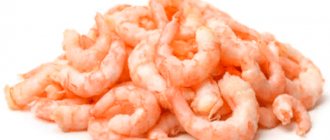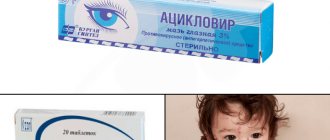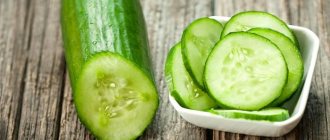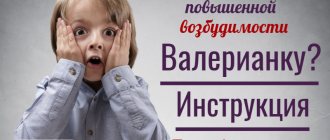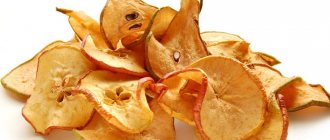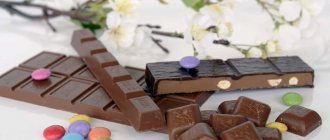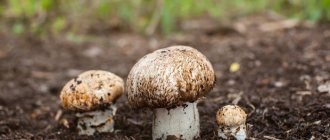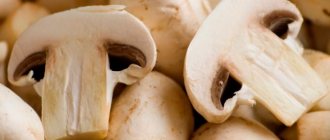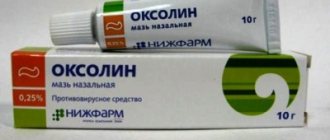Cholisal gel is a dental product that has anti-inflammatory, antimicrobial and analgesic effects. It is not available in adult or pediatric form and, according to the instructions, can be used to treat a child. The gel is transparent, with the smell of anise oil, available in tubes of 10 g.
- 2 Side effects
- 3 Use of Cholisal for gum inflammation
- 4 Use of Cholisal gel for stomatitis
- 5 Use of Cholisal gel during teething in a child
- 6 Drug overdose and contraindications for use
- 7 Conditions of release and storage
- 8 Interaction with other drugs
Instructions
Pharmacotherapeutic group
NG1VP
Compound
1 g contains: Active ingredients: choline salicylate - 87.1 mg, cetalkonium chloride - 0.1 mg. Excipients: hyaetellose, methyl parahydroxybenzoate, propyl parahydroxybenzoate, glycerol, anise seed oil, ethanol 96%, water.
Release form
Dental gel. 10 g or 15 g in aluminum tubes with a membrane and caps made of polymer material (with the enemy). The tube is placed in a cardboard box with instructions for use.
Description
Transparent, colorless, homogeneous mass with the smell of anise oil.
Pharmacological properties
When applied topically, the main active ingredient choline salicylate is quickly absorbed through the mucous membrane of the oral cavity, providing local analgesic, anti-inflammatory and antipyretic effects. It inhibits the activity of cyclooxygenase, the functions of macrophages and neutrophils, the production of interleukin-1 and inhibits the synthesis of prostaglandins. It also has antimicrobial and antifungal effects (in acidic and alkaline environments). Cetalkonium chloride is an antiseptic that acts on bacteria, as well as fungi and viruses. The gel ethanol-containing adhesive base ensures rapid development of the effect and retains the active substances on the mucous membrane for a long time. The analgesic effect occurs within 2-3 minutes, while its duration is 2-8 hours.
Pharmacokinetics
When applied to mucous membranes, it is well absorbed.
Indications for use
For local use on the mucous membranes of the oral cavity as an analgesic and anti-inflammatory agent in the treatment of periodontal diseases, damage to the oral mucosa, diseases occurring with an inflammatory reaction and pain, including:
- stomatitis of various etiologies
- gingivitis
- periodontitis
- damage to the oral mucosa when wearing dentures
- trauma to the oral mucosa
- teething pain in children
- cheilitis
- candidiasis of the oral mucosa
- minor surgical interventions in the oral cavity
- lichen planus localized to the oral mucosa
- damage to the oral mucosa in Stevens-Johnson syndrome as part of complex therapy.
Contraindications
Hypersensitivity to salicylates and other components of the drug.
Side effects
A short-term mild burning sensation in the areas where the drug was applied, which goes away on its own. Allergic reactions.
Overdose
No cases of overdose of the drug Cholisal® have been identified.
special instructions
If the first signs of a side effect of the drug appear, you should immediately inform your doctor. Use the drug only for topical use. Cholisal® does not contain sugar.
Impact on the ability to drive a vehicle and maintain moving mechanisms
The drug does not limit psychophysical activity, the ability to drive vehicles or maintain moving mechanisms.
Carefully
pregnancy, lactation period, children under 1 year.
Directions for use and doses
Locally. Cholisal® is used 2-3 times a day before meals (for pain relief) or after meals and before bed. A strip of gel 1 cm long for adults and 0.5 cm for children is squeezed onto a clean finger and rubbed with light massaging movements into the affected area of the oral mucosa. For periodontal diseases, the gel is injected into the pockets or applied in the form of compresses, or gently rubbed into the gums 1-2 times a day.
Interaction with other drugs
When taking the drug Cholisal®, it is possible to enhance the effect of other anti-inflammatory, antipyretic and analgesic drugs.
Storage conditions
At a temperature not higher than 25°C. Do not freeze. Keep out of the reach of children.
Best before date
3 years. Do not use after the expiration date stated on the packaging.
Use of the drug
Many parents do not know at what age Cholisal can be used for children. The instructions for use of the drug indicated that it is recommended to use it after 12 months from birth. However, some doctors allow its use at an earlier age, from 5 to 6 months. It all depends on the individual characteristics of the baby, the intensity of pain during teething.
The process of use is quite simple:
- If it is necessary to eliminate gum soreness, the damaged tissues are treated with gel before feeding.
- If the baby is more capricious, it is also allowed to lubricate the mucous membrane after feeding and before bed.
- To treat the baby’s oral cavity, you need to squeeze 0.5 cm of gel onto a previously disinfected finger and gently rub it into the gums. The gums should be blotted with a piece of gauze before application.
- For periodontal disease, Cholisal should be rubbed into the gum pockets 1 – 2 times a day.
Cholisal is used for children under one year of age until the pain syndrome is completely eliminated. When prescribing treatment, the pediatrician takes into account the individual characteristics of the child, his physical and emotional state. It is recommended to use the drug in parallel with other medications aimed at reducing inflammation.
In this case, the mouth must first be cleaned of plaque, then rinsed with a disinfectant solution, and then the application of Cholisal. When teething, it is imperative to thoroughly clean and disinfect the baby’s mouth. Otherwise, an inflammatory process may begin, requiring antibiotics.
Cholisal for teething
- Added 10/15/2018
- Drugs and medications
- No comments yet
Teething is a physiological stage that all children go through. It is often accompanied by unpleasant, uncomfortable and even painful sensations, causing a sharp deterioration in the baby’s well-being and behavior. To provide relief during this period, both home devices are used, such as a cold spoon, chilled silicone teethers, and pharmacological agents. The teething gel “Cholisal” has become famous for its high effectiveness.
The availability and reasonable price of the drug has led to it being increasingly used to facilitate the process, but in terms of use, composition, possible side effects, and other things, a number of questions remain that parents should familiarize themselves with in more detail.
Effect of the drug
"Cholisal" is considered a new generation drug, which is superior to its predecessors in many characteristics. The action of this dental gel is based on an almost instantaneous effect on the area where discomfort is felt, which allows you to reduce swelling, inflammation and numb the disturbing area in a few minutes. "Cholisal" has a pleasant natural scent due to the presence of anise extract. In addition, it has a pleasant taste, which over time acquires a bitter tint, characteristic of some medicinal herbs.
Using "Cholisal" for infants, you can suddenly achieve calm; often, after application, an exhausted child falls asleep, since he could not rest for a long time due to disturbing sensations.
The effect of the drug "Cholisal" is based on the content of the following active substances:
- Anhydrous choline salicylate. It quickly penetrates through cell membranes into the middle layers of the mucous membrane and reaches the sensitive endings of nerve fibers, due to which the effect of partial or complete anesthesia occurs. In addition, the substance has antimicrobial and antimycotic effects.
- Cetalkonium chloride. The wide spectrum of action of this active substance helps fight various viral organisms, fungi, and gram-positive microbes that cause diseases of the oral mucosa. A high degree of antisepticity makes cetalkonium chloride a component of many modern drugs for the treatment of diseases of the oral cavity.
- propyloxybenzoate;
- medical alcohol;
- anise oil;
- glycerol;
- distilled water.
All excipients included in the composition are characterized by a low degree of toxicity, which allows their use in preparations for young children.
Description of the drug
In dental practice, Cholisal is successfully used for disinfecting the oral cavity, eliminating inflammatory processes, and relieving bacterial and fungal infections for children and adults.
The effectiveness of therapeutic procedures with this medication has been proven over time. It productively eliminates pathogenic microflora, preventing harmful bacteria from developing. The medicinal formula of Cholisal gel is suitable for use by adults and children.
The composition of the drug includes:
- choline salicylate;
- cetalkonium chloride;
- glycerol;
- salicylic acid components;
- flavoring additives;
- anise oil;
- ethanol;
- water base.
The drug can be described as a homogeneous transparent substance, rich in anise flavor. The gel is produced in aluminum tubes. The inflammatory process of the oral cavity is stopped due to the inhibition of painful mediators by salicylate.
Unlike many targeted anti-inflammatory drugs that cover superficial areas of the mucosa, Cholisal penetrates into the deep layers of gum tissue, producing maximum effect.
Release form
The manufacturer is a Polish pharmaceutical company. The gel has a transparent jelly-like structure. The consistency of the substance allows it to be economically applied and evenly distributed on the mucous membrane of the gums, and prevents rapid rinsing with saliva and swallowing.
Ten- and fifteen-gram aluminum tubes with sealed edges are on sale. The tubes are screwed on with caps, under which there are protective membranes. Each unit is sold in a cardboard box indicating the production date and with included instructions.
Indications for use
Indications for use include many signs of teething in infants:
- swelling of the gums;
- redness of the eruption sites of baby teeth;
- local increase in temperature of the mucous membrane;
- signs of pain during teething - poor sleep, frequent awakenings, refusal to eat, increased moodiness, etc.;
- hematomas in the gum area.
Due to rapid absorption, which is the main characteristic feature of the Cholisal gel, all these manifestations decrease very quickly, and sometimes completely stop bothering the child.
Indications for use and composition of Cholisal gel
The gel can be used in the following cases:
- gingivitis;
- injury to the oral mucosa;
- periodontitis;
- inflammation of the hood near the wisdom tooth;
- teething in a child;
- inflammation of the mucous membrane under dentures;
- stomatitis.
One gram of Cholisal contains:
- 87.1 mg choline salicylate;
- 0.1 mg cetalkonium chloride.
Auxiliary ingredients include glycerin, anise oil, methyloxybenzonate, water, ethyl alcohol and hydroethylcellulose .
Choline salicylate is a derivative of salicylic acid. It blocks inflammatory processes in the mucous membrane of the mouth and gums. At the same time, it penetrates deeply into the mucous membrane, which is important when treating dental problems, since other similar gels act only superficially. It also relieves pain for 2-8 hours.
Cetalkonium chloride is an antiseptic. It acts as an antimicrobial component.
Due to its structure, the gel penetrates well into tissues, quickly finds nerve endings and remains on the oral mucosa for a long time. It also almost never enters the circulatory system. Unlike ointments, it adheres well to the oral mucosa. Thanks to the combination of anti-inflammatory and antimicrobial effects, the drug has no complete analogues . There are products that only have an antimicrobial effect, or, conversely, that only relieve inflammation.
How to use
In order to relieve discomfort during teething, it is recommended to apply the gel up to 3 times during the day, maintaining equal intervals between lubrication. For children who refuse to feed because of pain, it is recommended to apply Cholisal 5 minutes before meals. In cases where gum inflammation prevents you from falling asleep, the gel is applied when preparing for bed.
All manipulations should be carried out by first washing your hands with soap and rinsing off the remaining residues well with running water. Before application, the mucous membrane is dried using a gauze swab. For children, it is enough to squeeze out a strip about 0.5 cm long, after which the gel is applied to the gums with light massage movements.
When applied correctly, relief occurs within 2-3 minutes. It is stated that the effect lasts 6-8 hours, after which the effect of the drug gradually ceases.
At what age can Cholisal be used for children?
> Children's dentistry
23.04.2020
Children, like adults, suffer from dental diseases. Gingivitis, periodontitis, and stomatitis are accompanied by unpleasant symptoms and require timely and competent treatment. To eliminate pain and inflammation in young patients, safe medications are used.
Cholisal is a dental product that is used to treat and alleviate the symptoms of the diseases described above. The medication disinfects the oral cavity, eliminates the inflammatory reaction, and relieves pain.
The medicine is effective against many bacteria and fungi; it quickly penetrates the soft tissues through the inner membrane and has a therapeutic effect. Parents are wondering whether Cholisal can be used by children.
If you follow the rules of use, this is possible.
Cholisal: composition analysis, indications
Cholisal gel is a dental product that destroys pathogens, eliminates the inflammatory reaction and pain. The drug is available in one dosage form, which is suitable for adults and children.
- choline salicylate;
- cetalkonium chloride;
- food additive E1525;
- glycerol;
- methyl and propyl ester of salicylic acid;
- anise oil;
- ethanol;
- water.
In appearance, it is a homogeneous transparent mixture with an anise aroma. The ointment is packaged in an aluminum tube.
Choline salicylate is a derivative of salicylic acid. This substance blocks inflammatory mediators in the oral cavity, as a result, the inflammatory reaction disappears. The component penetrates into the deep balls of the inner lining of the mouth, unlike other dental preparations that act on the surface. In addition, the substance has an analgesic effect.
Cetalkonium chloride exhibits an antiseptic effect. This component is active against harmful bacteria. Also, cetalkonium chloride has weak effectiveness against certain fungi and viruses.
Cholisal is used by children for the following diseases:
- Gingivitis.
- Periodontitis.
- Pericoronaritis in the area of the lower 8th tooth (wisdom tooth).
- Inflammation of the gums under dentures.
- Injuries to the oral cavity.
- Teething.
- Stomatitis (pain relief from erosions).
- Thrush of the mouth, etc.
The drug acts 2 - 3 minutes after treatment of the mucous membrane, the therapeutic effect lasts for 2 - 8 hours.
Features of using the gel
Some parents do not know at what age Cholisal can be used. According to the instructions, the medication can be used from 12 months, although many mothers use it from 5 to 6 months when teething.
The gel is used to treat damaged areas of the oral cavity before eating if it is necessary to relieve pain. The drug can also be applied after meals or before going to bed.
The medication is used only after the doctor’s permission, twice or three times a day. For treatment, a minimum amount of gel is squeezed out and gently lubricated the damaged area.
Adult patients squeeze out a strip of gel measuring 1 cm, and children - 0.5 cm.
In the presence of periodontal disease (periodontal tissue), the product is injected into the gum pockets with a clean finger, used in the form of a compress, or gently rubbed into soft tissues. In this case, the gel is used 1 or 2 times a day. The duration of treatment depends on how old the patient is, what symptoms and complications are present, and how effective the therapy is.
Cholisal for gums
Cholisal can be used for inflammation of the gums and periodontal tissue in combination with other drugs. It is first recommended to clean your teeth from hardened plaque and systematically use disinfectants for rinsing.
Otherwise, the disease enters a severe phase, during which antibacterial drugs cannot be avoided. With monotherapy (gel only), the inflammatory reaction gradually decreases, but becomes chronic. As a result, the teeth in the socket will become mobile and will soon fall out.
The course of therapy lasts 10 days. A compress is applied to the child’s mouth after meals in the morning and evening. Before use, the mouth is cleaned with an antiseptic. The inner shell is dried with a gauze swab to increase tissue adhesion. After the compress, it is forbidden to eat for 2 hours and drink for 30 minutes.
Teething gel
Many parents use Cholisal during teething to relieve pain in children under one year old. Dentists are against using the product for children under 12 months.
This is due to the fact that the ointment contains anise oil, which provokes excessive salivation in the baby, during which teeth erupt. After using it, in addition to pain, the baby will suffer from coughing and drooling.
Saliva mixes with the active ingredients of the medication and irritates his skin.
If parents still decide to use the drug, then it is necessary to dry the mucous membrane with gauze and apply the ointment with clean fingers. Frequency of application – 2 or 3 times in 24 hours.
For teething children, other medications can be used to help relieve discomfort and pain.
Cholisal is used if a child’s wisdom tooth is erupting, and this process is accompanied by inflammation of the periodontal tissue.
The gel is contraindicated if the gum hood is festered, the cheek is swollen, and an unpleasant odor of pus is heard from the mouth. In this case, it is necessary to urgently visit a dental surgeon.
Cholisal for stomatitis
The gel is recommended to be used only to eliminate pain caused by erosion, and not to treat stomatitis. That is, the drug is used for symptomatic treatment. This is explained by the fact that children are most often diagnosed with herpetic and aphthous forms of the disease.
Thus, Cholisal for stomatitis in children is used to anesthetize ulcerations on the tongue and gums. The basis of therapy is medications with antiviral and antihistamine effects. Which ones exactly, see the link https://vskormi.ru/mama/stomatit-u-mamy-i-rebenka/.
Precautionary measures
According to the instructions for use for children, Cholisal is contraindicated if its components are intolerant. If the baby is under 12 months old, the doctor must constantly monitor his condition while using the drug.
Cholisal sometimes provokes negative phenomena in the form of a burning sensation in the mouth, which goes away on its own after some time. If you are hypersensitive to Cholisal substances, the likelihood of allergies in the form of itching, swelling, irritation, etc. increases.
If adverse reactions occur in a child, you should stop using the ointment and consult a doctor who will help you choose safer and cheaper analogues. There is no information on drug overdose. The drug does not interfere with the activity of the central nervous system.
Alternative remedies
Analogs of Cholisal are presented in tablets, suppositories, syrups, and sprays. There are options cheaper and more expensive than the above gel, depending on the manufacturer.
- Metrogyl Denta is based on metronidazole, which is recommended for use by women during pregnancy and children under 12 months. The drug is used to treat stomatitis. However, many doctors do not recommend using it in the 1st trimester of pregnancy and during breastfeeding.
- Vokara based on snake venom, sage, belladonna and other components. The herbal preparation is allowed to be used for treatment in patients over 12 years of age. The medication is contraindicated in younger children, as well as lactating women.
- Anti-Angin Formula is presented in tablets based on chlorhexine, ascorbic acid, tetracaine. The medication is allowed to be used for stomatitis and gingivitis in patients over 5 years of age. Under the supervision of a doctor, the medicine is used by pregnant and nursing mothers.
Thus, Cholisal is an effective drug that eliminates trophic phenomena, eliminates ulcers, necrosis, and relieves inflammation of infectious origin. The medication is contraindicated in case of hypersensitivity to its components and in children under 1 year of age. It is recommended to consult a dentist before using the gel.
Age restrictions
The instructions for the “Cholisal” tooth gel say that up to the age of 1 year, the drug should be used with caution. Many experts insist that it should not be used before this age. This is due to a number of factors:
- Anise seed oil, which is one of the ingredients, has a dramatic effect on salivation, repeatedly activating the work of the salivary glands. In young children, this can cause not only skin irritation, but also choking due to the inability to swallow large amounts of saliva.
- High likelihood of developing side effects, which decreases with each month of life.
- Possibility of severe allergic reactions to the components of dental gel for teething.
However, after a personal consultation and examination of the child by a doctor, some pediatricians remove this restriction and allow the use of Cholisal even for six-month-old infants.
Tooth gel "Cholisal" for children with stomatitis and teething: instructions for use
Dentists treat both adults and young patients with oral diseases.
Unpleasant symptoms that occur with gingivitis, stomatitis, periodontitis, and other pathologies require timely diagnosis and competent treatment.
In childhood, the most harmless medications are usually used. One of these medications is Cholisal for children.
It is productively used for the treatment of the listed diseases and other pathologies of the oral cavity, effectively eliminating inflammation and reducing pain.
Composition and release form
Cholisal is produced in the form of a gel, which has a colorless, homogeneous mass; it is not washed off with saliva. The active components of the drug are:
- Cetalkonium chloride (0.1 mg), an antiseptic that destroys gram-positive (colored blue, releases spores and toxic substances - endotoxins) pathogenic microflora, fungi, viruses, bacteria.
- Anhydrous choline salicylate (87.1 mg) has antimicrobial and antifungal effects.
Excipients include:
- glycerol;
- 96% ethanol;
- hyaetellosis;
- methyl parahydroxybenzoate;
- distilled water;
- anise seed oil;
- propyl parahydroxybenzoate.
The gel is produced in an aluminum tube of 10 or 15 g, with a membrane and a protective cap made of polymer material, in a cardboard box with instructions for use.
Cholisal is an effective drug with complex action that has analgesic, antimicrobial and anti-inflammatory properties. It is widely used in therapy, surgery and dentistry, available in the form of a gel and sold without a prescription.
The main active ingredients are cetalkonium chloride and choline salicylate, auxiliary components: ethyl alcohol, propyloxybenzoate, methyloxybenzoate, glycerin, distilled water, benzoxyethylcellulose, anise oil. The gel is intended for topical use and is characterized by rapid absorption into the oral mucosa, which ensures a quick effect.
Instructions for use
Children's gel is recommended for eliminating trophic phenomena, eliminating ulcers and necrosis, and relieving inflammation, including those that have an infectious basis. Indications for use:
- Periodontal diseases;
- Stomatitis of various types;
- Erosive stage of lichen planus;
- Gingivitis;
- Allergies;
- Traumatic phenomena of the mucous membrane;
- Teething in a child (to relieve pain);
- Relief during dental operations;
- Elimination of pain when wearing dentures on the teeth.
Advantages and disadvantages
The main advantage of Kholisal is its gel structure. The base in gel preparations is water, while in ointments it is vegetable or animal fats. Because of the water, the gels are quickly absorbed.
In this case, a thin film remains on the mucous membrane, which acts as a barrier to the penetration of pathogenic microflora into the pathological focus.
The gel structure allows the drug to stay on the mucous membrane better and longer than ointments.
A disadvantage is increased salivation during treatment with Cholisal. The work of the salivary glands is stimulated by the anise seed oil included in the gel.
For adults, such a deficiency is not a problem, however, if stomatitis is diagnosed in an infant, difficulties may arise. A large amount of saliva in a baby's mouth can lead to constant coughing and choking.
Saliva will constantly flow out, the area around the mouth and neck will be wet, which can lead to irritation, congestion and rashes in this area.
Contraindications and side effects
Who should not use the drug? For those who suffer from drug allergies to the components of the drug, pregnant women, nursing mothers, and infants under one year of age.
When applying the gel to the mucous membrane, especially the damaged one, a tingling and tingling sensation is felt, which gradually passes, and a feeling of relief and freezing occurs. Some people may experience allergic reactions.
Source: https://osp-sakhalin.ru/apteka/holisal-dlya-grudnichkov.html
Side effects and overdose
Among the side effects of this gel are the following:
- short-term burning sensation after application;
- allergic manifestations;
- vomit;
- nausea;
- skin rashes.
The incidence of these side effects when using this teething gel is very low.
The body's reaction to a significant overdose has not been sufficiently studied, so it is necessary to avoid in every possible way that a large volume of the medicine is swallowed by an infant or older child. If this does happen, a thorough rinsing of the oral cavity is necessary, and if a large amount of Cholisal gets into the stomach, a gastric lavage is performed.
Terms of purchase and price
To purchase Cholisal tooth gel, you do not need a prescription, since it is freely available and is an over-the-counter drug. You can buy it either in a regular stationary pharmacy or in an online store that sells pharmaceutical products.
The price for tubes of 10 g in stationary pharmacies starts from 200 rubles, and in online stores – from 185 rubles. The price for a 15 g tube is higher - from 408 rubles. in pharmacies and from 340 rubles. when purchasing online.
Reviews from doctors
Galina Stepanovna Shapoval, pediatrician
“I often recommend Cholisal to my young patients, since this drug is characterized by a very rapid effect. In most cases it is well tolerated. During my entire practice, I only once encountered a side effect in the form of an allergic reaction on the skin, which quickly stopped after stopping the drug. I prescribe Cholisal only for severe discomfort, but many parents decide to apply it to the gums during teething on their own. I don’t think this is a big problem, the main thing is that parents treat the use adequately and do not exceed the dosage.”
Alexey Vasilievich Ulyanov, pediatric dentist
“I believe that dental gels are excellent remedies that help relieve pain and inflammation on the mucous membrane during teething. One of the safest remedies is “Cholisal”. To a greater extent, the remedy is necessary to help parents survive this stage, since infants usually cry and scream a lot, even if their pain is not very intense. This is especially true for restless children with a high degree of excitability, who deprive not only themselves of sleep and peace, but also the entire family. But you need to remember that “Cholisal” is appropriate for several days, so I do not recommend its long-term use.”
How many months can Cholisal be used?
The gel is used exclusively on the surface of the oral mucosa. If "Cholisal" is prescribed for pain relief, then treatment is carried out before meals. In other cases, it is recommended to lubricate the mucous membrane with the medicine after meals and at night.
The optimal frequency of use of the medication is 2-3 times a day, and the duration of use is determined individually. A single dosage of “Cholisal” for a child is considered to be a strip of gel 5 mm long. To apply the medicine, you need to wash your hands and squeeze the medicine onto your finger. Next, the adult should rub the gel into the affected area using massaging movements and light pressure.
In most cases, the use of "Cholisal" is reviewed positively. In childhood, this drug is especially in demand for painful sensations when teeth are being cut. According to moms, it also helps in treating oral thrush, gum fistula, gum inflammation and many other dental problems.
In addition, the medicine tastes pleasant, and the medicine is consumed quite economically. In this case, an allergy to the gel occurs in isolated cases, but there are complaints of a tingling and burning sensation after application. The disadvantages of Kholisal include its high cost.
The action of "Cholisal" is due to two active compounds at once. One of them is choline salicylate, which is contained in one gram of the drug at a dose of 87.1 mg. The second active component of the drug is called cetalkonium chloride. Its dosage in 1 gram of gel is 100 mcg.
Among the inactive ingredients of Cholisal are glycerol, 96% ethanol and hyaetellose. The drug also contains propyl and methyl parahydroxybenzoate. The smell of the gel is due to anise seed oil, and for a more liquid structure, all auxiliary components are supplemented with water.
We suggest you familiarize yourself with: Ointment for inflammation of the gums Cholisal
Cholisal should not be used in childhood only if a young patient is hypersensitive to choline salicylate or another ingredient of the gel.
Sometimes, immediately after treatment with Cholisal, the child begins to complain of a burning sensation, which soon goes away on its own and does not require discontinuation of treatment.
Operating principle
Thanks to the combination of two active ingredients, "Cholisal" is a combined local remedy.
Choline salicylate in its composition is a group of non-steroidal anti-inflammatory drugs (belongs to salicylic acid derivatives), so it has all the effects that NSAIDs have.
This compound affects cyclooxygenases, which leads to inhibition of the production of interleukin 1 and prostaglandins, and also affects neutrophils and macrophages. This gives the gel anti-inflammatory and analgesic properties.
In addition, choline salicylate has some antifungal and antibacterial effects.
Cetalkonium chloride is an antiseptic, as it can act on various bacteria, as well as viral particles and fungi. Adding such a compound to the gel helps prevent suppuration of the damaged mucous membrane, as well as fungal and viral complications.
Since the “Cholisala” base is alcohol-containing, gel-like and has good adhesive properties, the effect after treatment develops very quickly (within two to three minutes) and lasts for a fairly long period (up to 8 hours), since the active substances are retained on the surface of the mucous membrane and penetrate it well.
Contraindications
“Cholisal” is used to treat the oral mucosa when it is necessary to eliminate pain and an inflammatory reaction. The medicine is prescribed for:
- stomatitis caused by various reasons;
- periodontal inflammation;
- gingivitis;
- mucosal injuries;
- cheilitis or other lip diseases;
- performing minor surgical procedures in the oral cavity;
- lichen planus that affected the oral cavity;
- oral candidiasis;
- sore throat;
- Stevens-Jones syndrome, if there is damage to the mucous membrane in the mouth.
Can it be used during teething?
Indeed, one of the indications for the use of Cholisal is the painful sensations that appear in the child’s mouth during the eruption of baby or permanent teeth. Babies begin to cut their first teeth at 5-6 months of age, but pain, itching and other unpleasant sensations can occur several weeks before a new tooth appears.
Some babies endure this time steadfastly and teeth appear almost unnoticed by their parents. Other toddlers cannot tolerate pain and discomfort, so they begin to act up and cry, and their sleep and appetite may worsen. It is in such cases that local remedies with an analgesic effect are used, including Cholisal.
Reviews from parents
Anna Krasnobay, Minsk
“Silicone teethers, Viburkol, etc. did not help my daughter’s teething. But “Kholisal calmed her down very quickly, she behaved normally and slept peacefully. The only thing I can notice is that the effect did not last long: no more than 2-4 hours. Since I used it at the age of 5 months, she needed to sleep several times a day, and she couldn’t smear it so often.”
Darina Firsun, Tver
